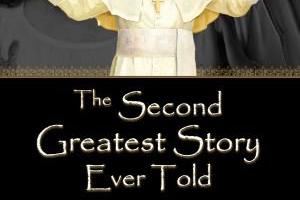The Church, the Faith and the Civil War
150th anniversary remembrances

June 2, 1865: 150 years ago, Confederate Gen. Edmund Kirby Smith, who commanded Confederate forces west of the Mississippi, signed surrender terms offered by the Union, causing the last Confederate army to cease to exist.
Catholics played a huge role in the “War Between the States.” The conflict showed the best and the worst its faithful have to offer.
Many Catholics — both in the South and the North — opposed the war. Most Catholics didn’t favor slavery. For centuries, the Church had voiced full opposition, most recently by Pope Gregory XVI in 1839. And yet U.S. bishops were divided on the issue. Bishop Patrick Lynch of Charleston, S.C., traded epistles with Archbishop John Hughes of New York, both respecting Church teaching, but with Bishop Lynch downplaying the magnitude of slavery as a problem. Bishop Martin Spalding of Louisville, Ky., actually supported slavery, while Tennessee’s Bishop James Whelan was so appalled by his state’s secession that he resigned as ordinary and left the South.
Meanwhile, some Catholics held powerful positions in the Confederate States of America. There were the famous Gen. P.G.T. Beauregard, the less well-known Gen. William Whiting, Adm. Raphael Semmes and Confederate Secretary of the Navy Stephen Mallory, America’s first Catholic cabinet official. There were also Catholic regiments, such as the Alabama 8th. Confederate President Jefferson Davis was schooled by Kentucky Dominicans and had asked at age 9 for reception into the Church. The Dominicans refused, and not necessarily for the best reasons.
But the Catholic presence was most felt in the North. As mentioned before, Archbishop Hughes was a fierce opponent of slavery. He was also concerned with demonstrating that Catholics were just as American as their Protestant neighbors.
Fighting for the Union, there were storied legions, such as New York’s Fighting 69th, as well as officers such as Gen. Philip Sheridan, who commanded the cavalry for the Army of the Potomac. The first black man to perish as a soldier was Capt. Andre Cailloux, a Catholic from Louisiana who had joined the Union Army and died at the Siege of Port Hudson. In addition to Catholics living on U.S. soil, Union agents went to Poland and Ireland to recruit mercenaries. This compelled President Davis to write Blessed Pope Pius IX (1846-78), asking him to use his office to prevent this; Pius wrote to bishops expressing concern.
Of course, one great area of Catholic involvement in the war came from chaplains. On the Union side, Father William Corby is famous for his absolution of an Irish brigade at Gettysburg just before battle. Many of them perished, but they died in a state of grace. A statue of him ministering to these troops stands at Gettysburg National Battlefield. Confederate chaplain Father Peter Whelan ministered to Union prisoners at the infamous Andersonville, Ga., POW camp. Father Whelan cared for the sick, saving thousands of lives, and administered last rites to the dying faithful. Additionally, Father Abram Ryan was not only a chaplain for the Confederacy, he was also its unofficial poet laureate.
Of course, the greatest Catholic heroes of the Civil War are largely unknown: Women religious served throughout the conflict. One who gained attention was Sister of Charity Anthony O’Connell, of whom one witness said, “She seemed to me like a ministering angel, and many a young soldier owes his life to her care and charity.” A more universally known sister was Blessed Maria Franziska Schervier, a religious from Germany, who was stationed at the time with the religious order she founded, the Franciscan Sisters of the Poor, in Cincinnati. It is said that women religious helped change some anti-Catholic sentiment. One Confederate chaplain recounted the words of a soldier, who told a religious, “Well, Sister … I’ll tell you. If you say you’re a Catholic, I’ll certainly have a better opinion of Catholics from now on.”
In an interesting postscript to the war, Confederate Gen. James Longstreet, who had witnessed the horrors of the conflict firsthand at the First Battle of Bull Run, as well as the battles of the Wilderness and Gettysburg, converted to Catholicism in 1877 at the age of 56 and remained a devout congregant until his death in 1902.
Brian O’Neel writes from Coatesville, Pennsylvania.
- Keywords:
- May 31-June 13, 2015

















